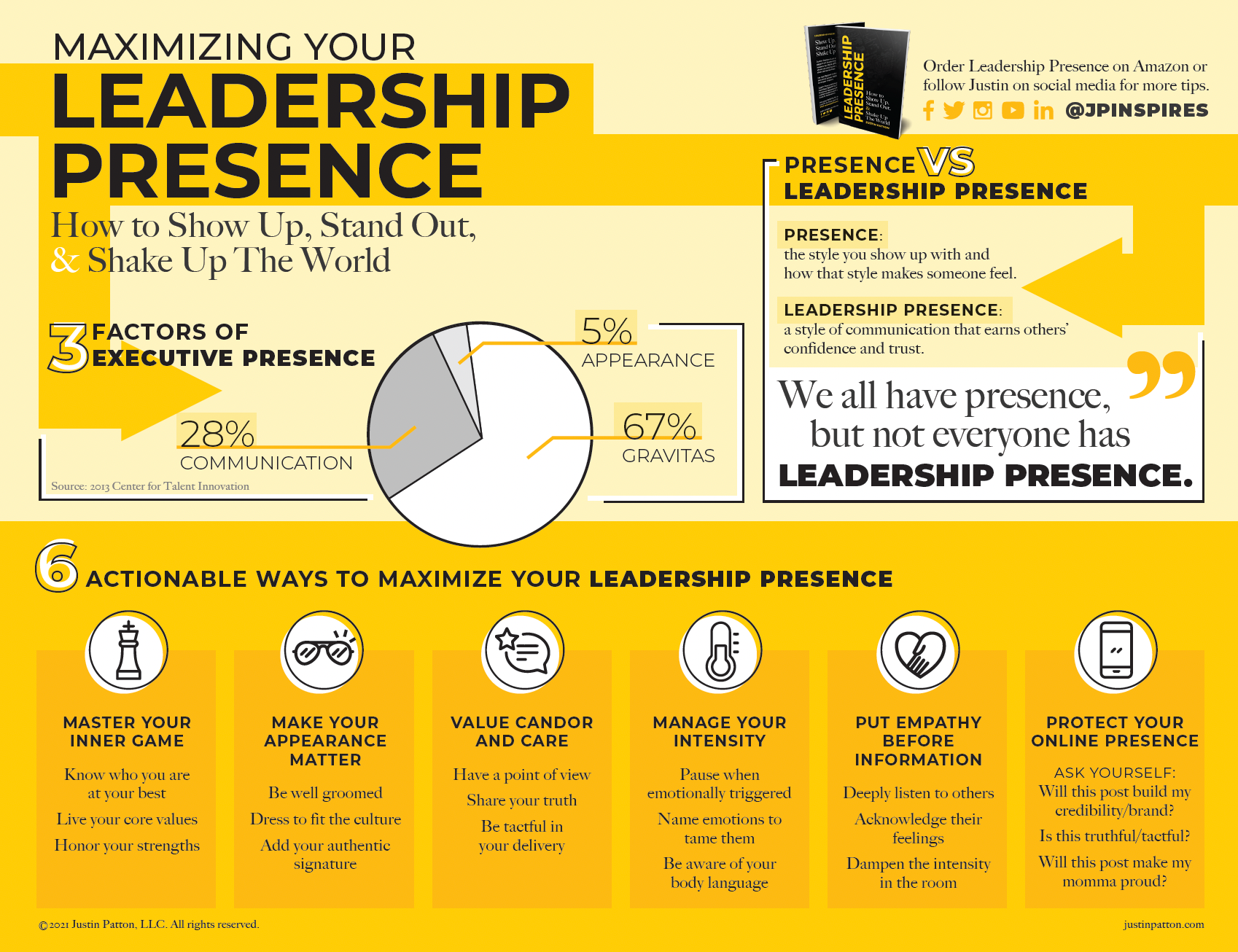You can’t fake presence. People can feel when you’re in the room — and when you’ve mentally left it.
But there’s a difference between having presence and having leadership presence. Everyone has presence. It’s the energy you bring into every interaction. Leadership presence, on the other hand, is the conscious choice to use that energy to earn other people’s confidence and trust.
The truth is, leadership presence isn’t a title you earn. It’s a moment-by-moment decision in how you show up.

Presence vs. Leadership Presence
Presence is personal. It’s about being aware of your own thoughts, emotions, and body language.
Leadership presence is relational. It’s about using that awareness to positively impact the people and culture around you.
Research from the Center for Talent Innovation found that executive presence — often confused with leadership presence — is built on three pillars: how you act (gravitas), how you speak (communication), and how you look (appearance). Those things matter. But true leadership presence goes beyond polish and poise.
It’s the credibility people feel when your words, actions, and energy align. It’s the trust you build when you stay calm under pressure. It’s the respect you earn not because of your title, but because of the way people feel in your presence.
As I write in my book Leadership Presence, “Your presence is either building trust or eroding it. But it’s never neutral.”
The Biggest Myth About Leadership Presence
One of the biggest myths about leadership presence is the idea that you should “fake it until you make it.“
I get why people say it — it sounds motivating. But it can also lead to a dangerous pattern of inauthenticity. When leaders “fake it,” they often disconnect from their real emotions and try to perform confidence rather than cultivate it. And that performance keeps them from building the one thing presence relies on: trust.
You can practice presence. You can stretch into confidence before you feel it. But faking who you are never earns credibility. I’ve coached a lot of leaders who “fake it until they make it” and then they make it. The problem is they don’t know how to stop faking it.
True leadership presence isn’t about pretending. It’s about aligning. Aligning your thoughts, words, tone, and body so you’re congruent — because people don’t follow perfection; they follow authenticity.
A Lesson in Gentleness
A few years ago, I went horseback riding in the countryside outside Berlin. The instructor, Inge, gave me a piece of advice I’ve never forgotten. She said, “Be gentle. They do everything for us.”
That line stopped me in my tracks.
As leaders, the people around us do everything for us — they make our jobs easier, they execute our vision, they allow us to achieve results we could never accomplish alone. And yet, how often do we grip the reins too tightly, trying to control every step instead of guiding with trust and calm?
Inge’s wisdom taught me that gentleness is not weakness. It’s strength under control. It’s the discipline to hold firm when needed, but to do it with empathy and purpose.
The same is true for leadership presence. It’s not about commanding attention. It’s about earning it — through gentleness, groundedness, and genuine care.
How to Develop Leadership Presence
If you want to strengthen your leadership presence this week, focus on these three practices.
1. Love People Enough to Tell Them the Truth
Radical transparency builds trust. When leaders sugarcoat feedback or avoid difficult conversations, they create confusion. Trust doesn’t leave people second-guessing.
That doesn’t mean you have to be harsh. It means you respect people enough to be honest. Presence requires the courage to speak truth with tact.
This week, pick one person you owe an honest conversation. Replace politeness with clarity. As I remind leaders often, “You can’t coach what you won’t confront.”
2. Manage Your Intensity
Great leaders know how to bring passion without pressure. Leadership presence is about being the calm in the storm when other people can’t be. You can’t outthink a deregulated nervous system, which means emotional regulation isn’t a nice-to-have — it’s leadership currency.
One technique I teach my clients is called “Be the ______.”
When you’re in a tough conversation or high-stakes moment, fill in the blank with a grounding metaphor:
- Be the anchor — steady and grounded.
- Be the compass — guiding others toward what matters.
- Be the thread — connecting people and ideas together.
The phrase becomes a mental cue that helps your body calm down, your breathing slow, and your brain re-engage.
This week, choose your phrase. Write it on a sticky note. Use it the next time the room gets tense.
3. Vent in Private. Lead in Public.
We’ve all seen leaders lose their cool in front of their team. It creates fear, not respect.
Leadership presence doesn’t mean you suppress emotion — it means you manage where and how you express it. Your team takes their emotional cues from you. If you unravel, they unravel.
So take time to process your frustration privately. Get perspective before you speak publicly. When you lead with composure, you create psychological safety for everyone watching.
This week, before you respond to a frustrating situation, ask yourself: Am I reacting from emotion or responding from intention?
The Truth About Leadership Presence
Leadership presence isn’t reserved for CEOs, extroverts, or the most charismatic person in the room. It’s available to anyone who’s willing to be self-aware, emotionally grounded, and authentic enough to make others feel seen, safe, and significant.
You already have presence. The question is whether you’ll use it intentionally.
Because leadership presence isn’t about being the loudest voice — it’s about being the clearest signal in the noise.
Check Out My Book, Leadership Presence
If you want to go deeper in developing your leadership presence, explore my book Leadership Presence — where I break down how to lead with confidence, credibility, and composure in every moment that matters. The book is only $6.99 on Amazon.

WATCH JUSTIN: KEYNOTE SPEAKER ON TRUST
Justin Patton is a trust keynote speaker, leadership coach, and founder of The Trust Architect Group. Through his trademark motto Trust Starts Here™, Justin helps leaders build trust in themselves, with others, and across their culture — so they keep people coming back for more. Learn more at justinpatton.com.

